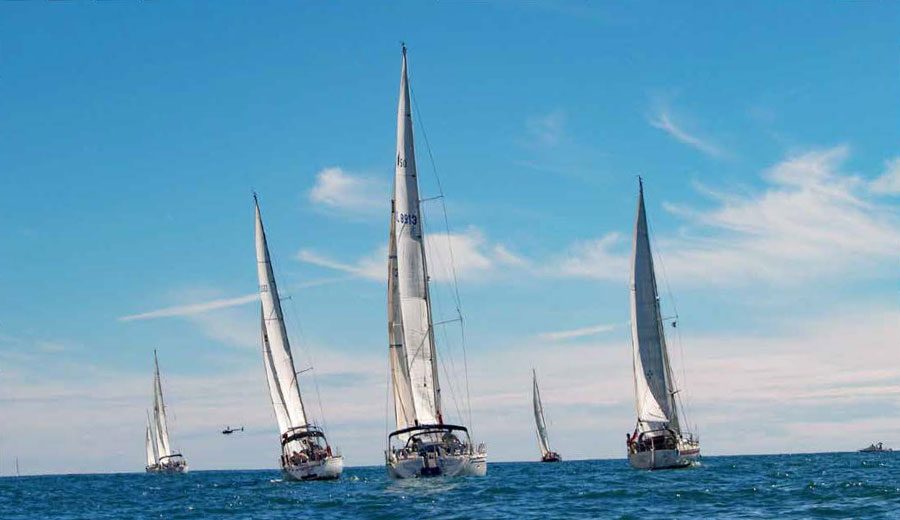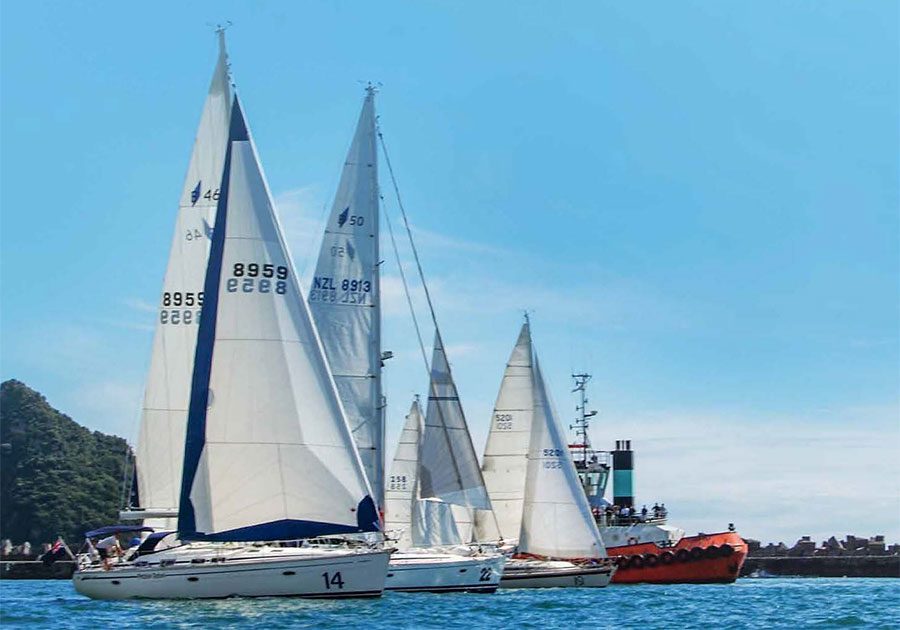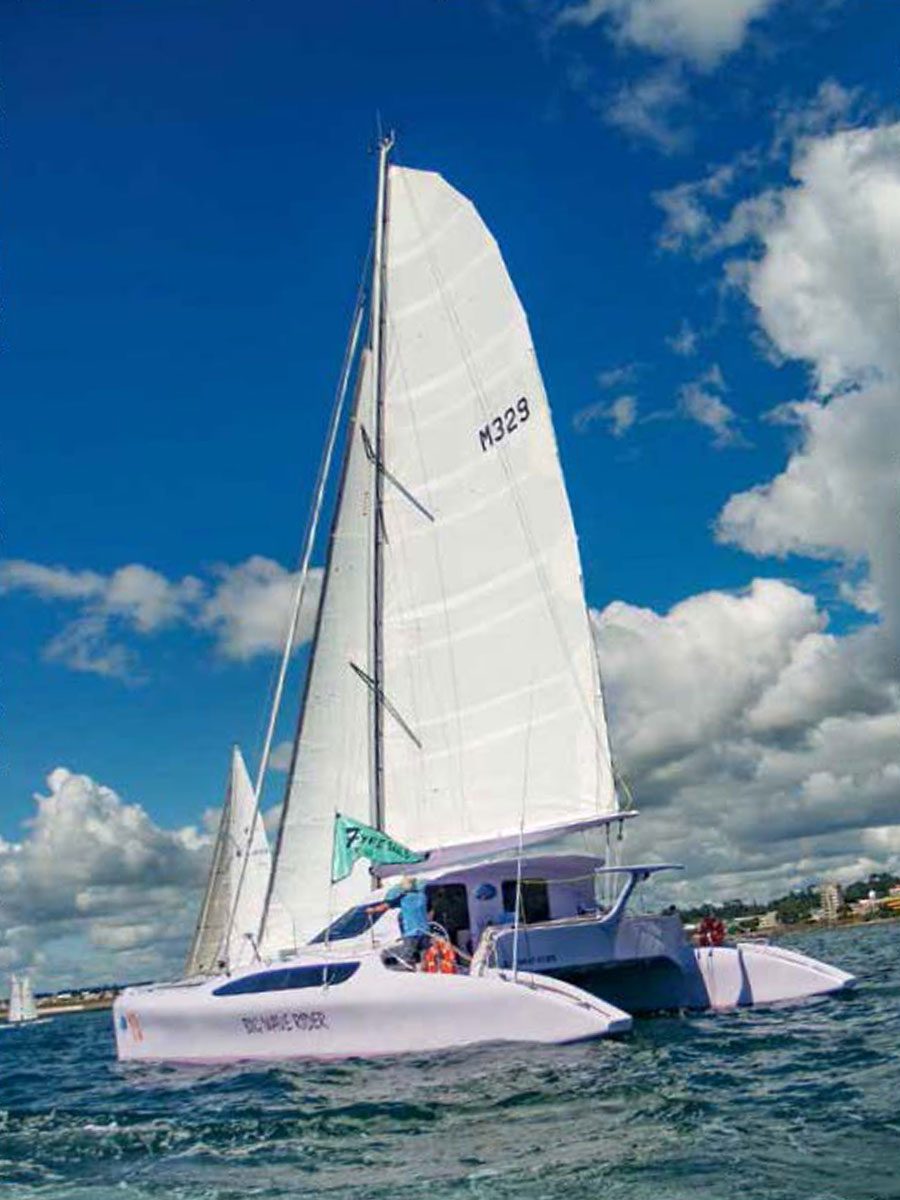

Sailors will race single-handedly across the Tasman Sea from New Plymouth to Southport in April 2023.
New Plymouth’s local paper, The Daily News, hit the nail on the head in a 1967 editorial: “There is an exciting challenge in the proposed singlehanded yacht race between New Plymouth and Brisbane,” it said.
“Over 1,400 miles of the Tasman Sea, an area that can produce seas to test the skilled yachtsman, the race could be one of the most demanding ever held.”
Little did the writer realise that the race would become the oldest continually run singlehanded yacht race in the world, be contested by the first women to complete a singlehanded offshore race, and generate some of the country’s best sailing stories.
And the next four-yearly race is scheduled to sail from New Plymouth for Southport in April 2023 with a fleet of about 11 entrants.
One rule change imposed by the race organisers, the New Plymouth Yacht Club, is a ban on yachts 9m (30 ft) or shorter, on the grounds they are “too dangerous.”

This counters experience from the race. There have been 12 single-handed races from New Plymouth since it first began in 1970 – and 106 entries, of which over ten have been 9m or less.
Andrew Fagan in his 5.3m Swirly World in Perpetuity sailed the 1994 Trans-Tasman and Wild Child, a 6.5m mini Transat skippered by Phil Bowers, finished within an hour or so ahead of Tony Mowbray in his 13.5m Coles design Solo Globe Challenger. Aucklander Trish Lewis put in a creditable performance in her 7.62m Whiting Reactor during the 2014 event.
That is not to mention the hundreds of ocean passages and races safely completed elsewhere in the world by yachts of 9m or less.
When the race was first proposed, there was only one other singlehanded ocean race in the world – the Observer Singlehanded Atlantic Race (OSTAR). The around the world Golden Globe Race, currently being run, which doesn’t allow the use of electronic navigation or communication, has started to honour the early sailors and their skill sets.
But meanwhile there have been several cancellations of OSTAR events, which means the Solo Tasman is the longest continually run event. Previous races have finished at Mooloolaba in Queensland, but it is not a customs clearance port whereas Southport is.
Long-time race supporter Kay Cottee owns a boatbuilding establishment at Yamba just over 200km further south. She competed in the 1986 race in Cinnamon Scrub and went on to become the first woman to sail solo, non-stop and unassisted, around the world.
Next year’s event is sponsored by New Plymouth land agents Ray White and is called the Ray White Solo Tasman Yacht Challenge.

There are 11 confirmed entrants to date, race secretary Annette Arms said. Among them is former Nelson boatbuilder/designer, Malcolm Dickson, who finished 12 hours behind his son Hamish in the 2018 race. His first solo Tasman race was the 1978 event.
Auckland yachtsman Alan Yardley has also entered Melting Point, his 9m Ross, and will be sailing his third single-handed race across the Tasman.
They’ll be up against the record of 6d 7h 13m set by Reini Gelder sailing his Crowther trimaran, Shark Angel, in the 2014 race.
The race is run in five classes: Adventure Monohull, Adventure Multihull, IRC and the Sir Francis Chichester Trophy for the line honours winner. Chichester, was the first person to sail around the world single-handedly by the clipper route and an early supporter of the solo Tasman race.
“Any race is a good race,” he’s quoted as telling organisers of the Tasman event. BNZ




